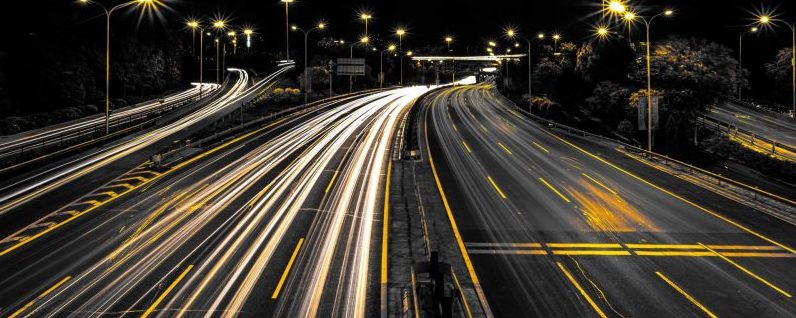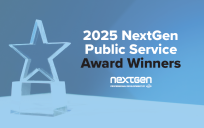By Kevin Jennings and Roch Muraine
Public safety is at the heart of the mission of most transportation departments (DOTs). In addition to reducing the risk of traffic injury or death, DOTs are looking to support state and local environmental goals by minimizing the pollutants that drive climate change and impact public health.
Many are looking to intelligent transportation systems, or ITS, as a means to achieve these ends.
Road transportation systems are evolving toward a safer, greener future through the use of digital technology. In the emerging ITS vision, Internet of Things (IoT)-ready network technology enables transportation departments to optimize their road systems in support of safer, less congested, more eco-friendly outcomes.
Toward ‘Zero Everything’
One useful way to frame the evolution of ITS is through the lens of “zero everything” — meaning zero fatalities, zero carbon and zero-trust networks. For DOT officials looking to explain the value of ITS to their stakeholders and to generate support for their ITS initiatives, this framing can help simplify an otherwise complex message.
Zero fatalities is obviously an important goal that funders, operators and citizens at large can appreciate. Zero emissions, or carbon neutrality, speaks to big issues around the health of the planet and quality of life. Zero trust offers an easy reference point for talking about the cybersecurity of sensitive information in support of these other goals.
By leaning on this message of “zero everything,” transportation officials can make clear the value proposition inherent in their ITS investments. This, in turn, can help unlock funding around these key initiatives.
Bringing Technology to the Fore
A range of modernized technologies can help deliver on the promise of ITS.
Intelligent transport depends on robust communications, in order to convey key data generated by the IoT sensors that make up the heart of the system. In this context, a hardened line of switches delivers both durability and reliability.
ITS is made up of devices, sensors, cameras — all dependent on a network whose components are exposed to the elements. The network must operate reliably in a range of challenging environmental conditions: rain and snow, extreme heat and cold. In a highway environment, IT doesn’t have the luxury of relying on air conditioning or heated cabinets for housing these critical networking devices.
Hardened switches are engineered to withstand these extremes. They’re able to operate in a wide range of temperatures, to accommodate the harshest possible conditions. With industrial-grade, highly secure ruggedized switches, transportation agencies can be assured that the critical information supporting ITS will always be available. Mission-critical applications will keep running, even in extreme temperatures and harsh environments.
Software also plays a role in supporting the emerging ITS vision. Within the network, software ensures that information from the sensors will be relayed in a predictable, reliable fashion. Modernized software delivers very high uptime to critical applications.
Switches, for example, can run on an operating system that ensures reliability. Sophisticated capabilities include a self-healing capacity, the ability of the switch to diagnose and remediate issues as they arise. This, in turn, saves on costly and time-consuming rollouts that pull skilled operators away from more pressing tasks.
Other key features may include a backup of the operating system on a switch, so that in the rare cases when a switch fails, it restores automatically to its configuration for that particular location. This in turn ensures continuous operations, and it relieves the pressure on thin-stretched technical teams within the transportation department.
Alcatel Lucent Enterprise helps bring this vision to life. It has invested heavily in transportation-related R&D in support of the hardened switches and modernized networking software that make ITS possible. Its tools enable the transportation department to operate the network efficiently, even with a limited staff.
Compared with conventional approaches, ALE tools deliver a higher level of functionality, greater resilience and inherent network cybersecurity, even in the challenging environmental circumstances that define the transportation environment.
ITS is a long-term investment, and agencies need to know that product availability and evolution are assured well into the future. As the IT and OT environments converge, ALE’s extensive track record in this space gives transportation departments confidence that they will have the needed support for their long-term deployments.
Looking Ahead
The ITS space will see increasing levels of automation, as transportation managers seek to support the expected growth of connected autonomous vehicles. There will be new government initiatives around safety, as well as new efforts to control emissions.
At the same time, government may be looking to ITS to help close the digital divide, ensuring a seamless transportation experience for both rural and urban users.
Modernized networking will play a key role in delivering on the promise of ITS. As smarter transportation systems come online, a robust and capable network will be a vital component in support of transportation departments looking to ease congestion, reduce climate impacts and elevate public safety.
It requires the investment of some big numbers with a lot of zeros behind them to seriously pursue the lofty vision of zero everything. Alcatel-Lucent Enterprise has led the charge and will continue to partner with transportation agencies committed to the life-enhancing benefits that can be achieved through the pursuit of these worthy goals that are captivating the ITS world.
Kevin Jennings is VP of Sales at Alcatel Lucent Enterprise, where Roch Muraine leads the global transportation.

This post was originally published on June 2, 2022.




Leave a Reply
You must be logged in to post a comment.